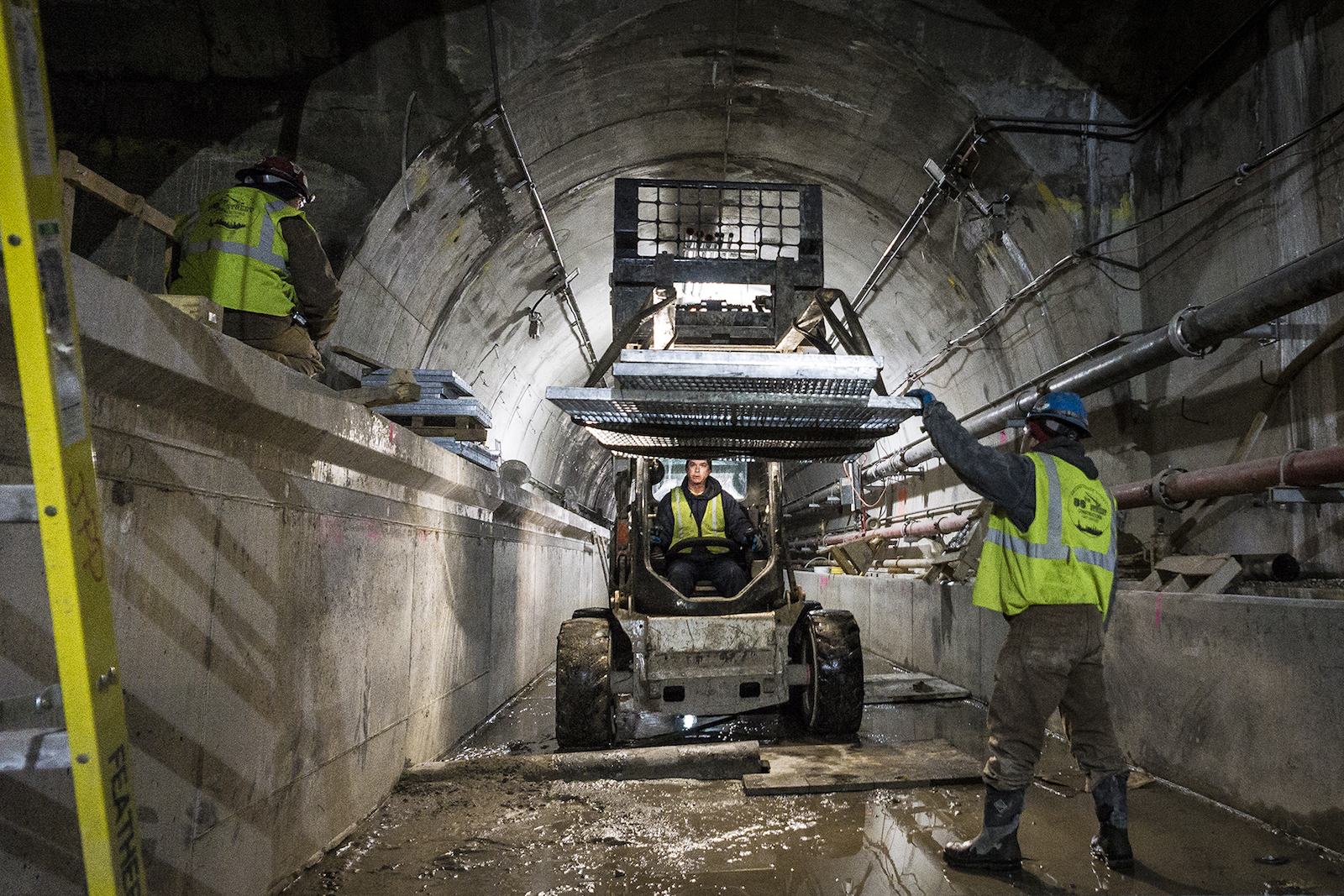
A $1 Trillion Dollar Infrastructure Plan is a Good Start
In 2018, President Trump wants to pursue a $1 trillion dollar infrastructure plan. Some have said this could be another boondoggle project where nothing really gets done, but a lot of money is spent on projects like, “The Bridge to Nowhere.” Others, including me, say that this would be a good way to strengthen our nation’s “platform for commerce” and improve our competitiveness in the global economy.
If Washington can get the $1 trillion dollar infrastructure plan moving in 2018, it will be a good shot in the arm for the nation’s economy and set up a better “platform for commerce” with residual value for the future economy. This would not translate into “shovel-ready,” make-work projects, but rather real improvements to all the layers of the infrastructure from roads, bridges and railroads (the common view of what infrastructure is) to all the other layers: airports, ports, power and network infrastructure layers, and others which should be all inclusive in the definition of infrastructure. The benefit would be two-fold: initial jobs to build out the improvements and then, the residual benefit of a better-quality infrastructure benefitting all who use it in the years to come.
With more effective layers of infrastructure, the United States will be better equipped to compete in the 21st century’s global economy.
An example of a real infrastructure project would be something to improve a bottleneck or create a new route where one does not exist, like the 18-mile bridge across the Bay to Hong Kong which cut down truck traffic to the international cargo airport from 18-19 hours down to 45 minutes. That project improved China’s economy and its competitiveness globally.
We have the same challenges here in the United States and there are some infrastructure bottlenecks of which the public would not even know about.
Outdated Mississippi Locks – A Perfect Candidate
One huge project which would give decades of residual payback would be the upgrading of all the outdated locks on the Mississippi River. Right now, they have barges lashed together in 15s and 25s. The barges are untied and retied at every lock because they cannot push through all the barges as once. The docks were built many years ago and have outlived their 50-year lifespans. They cannot handle multiple barge configurations at once which creates large bottlenecks on the Mississippi. Bottlenecks costs money and time. Both can impact profits for many companies and farmers, not to mention the losses in international competitiveness. The cost of sending freight down the Mississippi to other world markets is high because of this.
If we build larger locks and docks to accommodate these multiple barges (without untying them at each lock) we would speed up the shipping process, save energy costs (running the tugboats), and cut the costs of shipping many raw materials, grains and food. These infrastructure improvements would reduce the cost of goods sold overseas.
One lock malfunction can make the difference of billions of dollars in trade.
“A 2016 study by the University of Tennessee analyzing the effects of lock outages estimated that closures at one particular lock on the Mississippi River would cause shipments of corn and soybeans to decline 9%. A closure during the key fall harvest could reduce exports by 5 million tons, the study found. Authors Edward Yu, Burton English and R. Jamey Menard estimated that a significant decline in corn and soybean shipments could cause a $2.4 billion loss of economic activity.”
States like Wisconsin, Iowa, Minnesota, Illinois, and others would benefit because they ship grain, coal and aggregates down the Mississippi. The Illinois River also flows into the Mississippi and there are many materials shipped along this route from the Great Lakes and surrounding states. It has outdated locks as well. So the initial economic “boost” would be the construction jobs, but the long-term, residual benefits would be faster shipping through the Great Lakes down the Mississippi to all ports beyond the United States.
This Mississippi Locks Project (MLP) would be a perfect candidate for part of the trillion dollar infrastructure plan (if it ever comes together). It is definitely not a “make-work” project, but something that vastly improves the national “platform for commerce” and speeds up the whole shipping process across many industries and states.
Some facts.
The agricultural products and the huge agri-business industry that has developed in the Mississippi basin produce 92% of the nation’s agricultural exports.
Over 78% of the world’s exports in feed grains and soybeans, and most of the livestock and hogs produced nationally are shipped down the Mississippi.
60% of all grain exported from the United States is shipped on the Mississippi River through the Port of New Orleans and the Port of South Louisiana.
Representing 500 million tons of shipped goods per year, according to the Port of New Orleans. The Mississippi River barge port system represents a significant portion of the United States’ national trade.
At the lower end of the Mississippi River, shipping is focused on petroleum and petroleum products, iron and steel, grain, rubber, paper, wood, coffee, coal, chemicals, and edible oils.
Let’s get moving!
The Mississippi Locks Project (MLP) does not benefit one company, one industry nor one state. It benefits many companies, individual farmers, multiple industries, multiple states and economies. It should be viewed as a high-priority, bipartisan project because of the diversity of the beneficiaries.
All the projects being considered for infrastructure funding should be prioritized based upon their importance to national sustainability.

